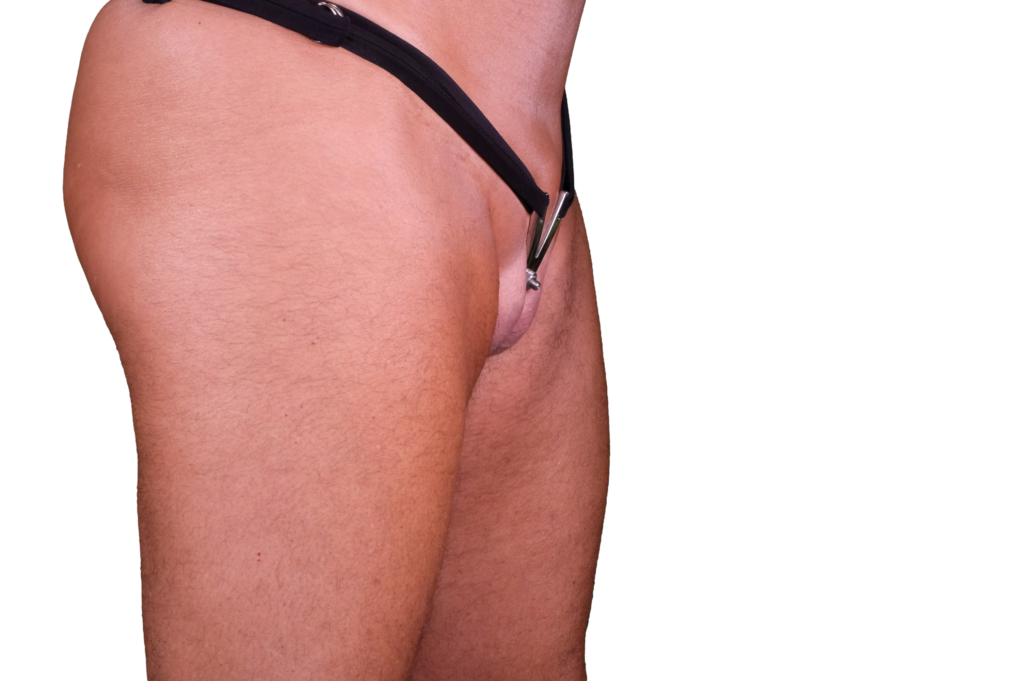Exploring Empathy: Men Wanting to Understand the Female Experience
Introduction
In a world where gender equality and inclusivity are increasingly championed, there is a growing curiosity among some men to better understand what it feels like to be a woman. This desire, driven by empathy and a genuine attempt to bridge the gender gap, highlights the evolving perspectives on gender identity and the importance of fostering empathy and understanding between genders. In this article, we explore why some men want to experience life from a female perspective and how this pursuit of empathy can contribute to a more inclusive society.
The Quest for Empathy
Empathy, the ability to understand and share the feelings of another, is a cornerstone of human connection. It fosters compassion, reduces prejudice, and builds bridges between diverse communities. For some men, the desire to experience life as a woman is rooted in a deep-seated quest for empathy, aiming to gain insight into the unique challenges, experiences, and perspectives that women encounter.

Male to female transformation designs called the Feminizer Flying-V
Understanding the Female Experience
- Challenging Stereotypes: Many men seek to challenge and break down traditional gender stereotypes. By experiencing life as a woman, they hope to dispel misconceptions and promote a more nuanced understanding of gender roles.
- Fostering Solidarity: Exploring the female experience can foster solidarity and create stronger alliances between men and women, ultimately contributing to gender equality efforts.
- Nurturing Empathy: Walking in another person’s shoes, even metaphorically, can nurture empathy. This can lead to more compassionate behavior and greater respect for women’s rights and experiences.
- Advocating for Change: Men who seek to understand the female experience often become advocates for gender equality, using their newfound perspective to drive positive change in their communities and workplaces.
Approaches to Understanding
- Open Conversations: Engaging in open, honest conversations with women about their experiences can provide valuable insights into their daily lives, challenges, and triumphs.
- Empathy Exercises: Some men participate in empathy exercises, such as wearing prosthetic devices that simulate the physical sensations of menstruation or pregnancy, to better understand the physical aspects of being a woman.
- Support for Gender Equity: Supporting initiatives and policies that promote gender equity can also be a way for men to contribute positively to the cause.
The Importance of Sensitivity
While the pursuit of understanding the female experience is commendable, it’s crucial for men to approach this quest with sensitivity and respect. Women’s experiences are diverse and complex, and no single experience can represent all women. Additionally, it’s important to recognize that empathy can only go so far in truly understanding someone else’s experience.

The desire of some men to understand what it’s like to be a woman reflects a growing awareness of the importance of empathy and gender equality. By actively seeking to comprehend the female experience, these individuals contribute to a more inclusive and equitable society. It’s a reminder that empathy is a powerful tool for building connections and fostering positive change in the world.
Are men gay that like wearing female clothing?
No, not necessarily. Enjoying dressing as a woman, a practice often referred to as crossdressing, is a matter of personal expression and gender identity, and it is not directly related to one’s sexual orientation. Crossdressing is a form of self-expression that individuals of various sexual orientations may engage in.
Sexual orientation refers to a person’s emotional, romantic, and sexual attraction to others. It is typically categorized as heterosexual (attracted to individuals of the opposite gender), homosexual (attracted to individuals of the same gender), bisexual (attracted to individuals of more than one gender), or asexual (having little or no sexual attraction to others). Crossdressing itself does not define one’s sexual orientation.
It’s essential to understand that gender identity, which relates to how individuals perceive themselves in terms of gender, is separate from sexual orientation. Some individuals who crossdress may identify as transgender, while others may identify as cisgender. Transgender individuals have a gender identity that differs from the sex assigned to them at birth, while cisgender individuals have a gender identity that aligns with their birth-assigned sex.
In summary, crossdressing is a form of self-expression and does not determine an individual’s sexual orientation. People of all sexual orientations may engage in crossdressing, and it’s important to respect and support individuals in expressing their gender identity in ways that are meaningful to them.
Crossdressing, the practice of men dressing in clothing typically associated with women, is a complex and multifaceted aspect of self-expression, identity, and culture. Let’s delve deeper into the topic of men dressing like women:
- Personal Expression: Crossdressing is often a form of personal expression and self-discovery. Some men find joy and satisfaction in exploring different facets of their identity by wearing clothing typically associated with the opposite gender. It can be a way to express creativity, challenge societal norms, and feel more authentic.
- Gender Identity: For some individuals, crossdressing is connected to their gender identity. Some transgender women, for example, may crossdress as part of their transition process or as a way to express their true gender identity before transitioning.
- Sexual Expression: Crossdressing can also be a part of one’s sexual expression and desires. Some individuals find it arousing and incorporate it into their sexual experiences or relationships.
- Cultural and Historical Significance: Crossdressing has a rich history in various cultures. In some societies, men dressing as women is part of traditional ceremonies, performances, or religious rituals. Drag culture, for instance, involves men dressing in an exaggerated, often glamorous, and artistic manner.
- Community and Support: There are communities and support networks for crossdressers, providing a safe and accepting space for individuals to connect, share experiences, and seek advice. These communities offer valuable resources and a sense of belonging.
- Challenges and Stigma: Despite growing acceptance of diverse gender expressions, crossdressers may still face social stigma and discrimination. Many individuals are cautious about revealing their crossdressing to family, friends, or coworkers due to fear of judgment or misunderstanding.
- Fashion and Style: Crossdressing often involves a fascination with fashion and style. Men who crossdress may appreciate the aesthetics of women’s clothing and enjoy the process of selecting and coordinating outfits.
- Legal Considerations: Laws related to crossdressing and gender identity vary from place to place. In some regions, individuals have legal protections to express their gender identity, while in others, they may face legal challenges.
- Education and Awareness: As society becomes more educated and aware of gender diversity, there is a growing recognition that gender is not solely defined by clothing. Advocacy and education are vital in challenging stereotypes and promoting acceptance of diverse gender expressions.
Men dressing like women is a complex and multifaceted phenomenon with a wide range of motivations and expressions. It’s important to approach this topic with empathy, respect, and a recognition of the diverse experiences and identities of individuals who engage in crossdressing. Embracing gender diversity and fostering an inclusive society involves understanding and accepting various expressions of gender identity and self-expression.
The choice to wear male-to-female transformation-style swimsuits and panties is a personal one, often rooted in gender identity, self-expression, and individual comfort. Here’s some information on this topic:
- Gender Identity and Expression: Some individuals who were assigned male at birth may identify as transgender women or as gender non-binary. For these individuals, wearing transformation-style swimsuits and panties can be a way to align their clothing choices with their gender identity and express themselves authentically.
- Comfort and Confidence: Clothing plays a significant role in how people feel about themselves. Wearing transformation-style clothing, such as swimsuits and panties, can provide comfort and confidence to those who identify as transgender women or who are exploring their gender identity.
- Gender Dysphoria: Gender dysphoria is a term used to describe the distress that can accompany the incongruence between one’s gender identity and assigned sex at birth. Some transgender individuals experience relief from gender dysphoria by wearing clothing that aligns with their gender identity.
- Swimwear Choices: Transformation-style swimsuits are designed to provide a more feminine appearance, with features like padded inserts or shaping to create a curvier silhouette. These swimsuits can help individuals feel more comfortable and confident while swimming or at the beach.
- Panties and Undergarments: Wearing panties designed for individuals assigned female at birth can also be a matter of personal comfort and preference. Some people find that female-cut underwear fits better or feels more comfortable, regardless of their gender identity.
- Privacy and Discretion: Many individuals who wear transformation-style clothing do so privately or in spaces where they feel safe and accepted. Concerns about privacy and potential judgment may influence when and where they choose to wear such clothing.
- Fashion and Self-Expression: Clothing choices are a form of self-expression, and some individuals simply prefer the style, fit, or design of transformation-style clothing, including swimsuits and panties.
- Supportive Communities: There are supportive online communities and local groups where individuals can connect with others who share similar experiences and interests. These communities provide valuable resources, advice, and a sense of belonging.
- Legal Considerations: Laws related to gender identity and clothing vary by region. In some places, individuals have legal protections that allow them to express their gender identity through their clothing choices, while in others, legal challenges may exist.
It’s important to respect and support individuals in their choices related to clothing and gender expression. Everyone’s journey of self-discovery and self-expression is unique, and what may be meaningful and authentic for one person may differ from another’s experience. Open-mindedness, empathy, and acceptance are key to creating a more inclusive and understanding society for all individuals, regardless of their gender identity or expression.